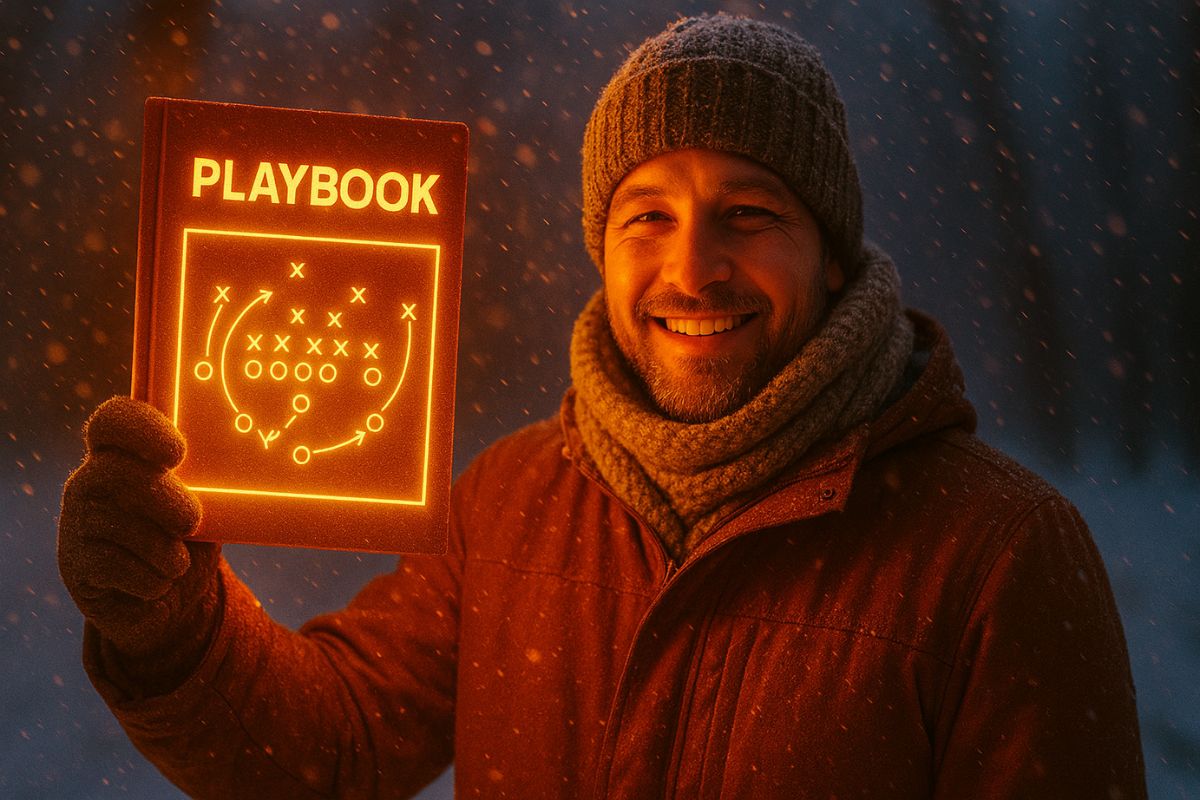Build Trust, Not Templates: Selling to Hotels in the Age of AI
I was knee-deep in my spam folder … again.
A dozen “Just circling back” emails, a handful of “quick check-ins,” and one masterpiece that started with “Dear {FirstName}.”
All I could think was: Are we still doing this?
So when I sat down with Kimberly Hensley from TripleSeat for our latest episode of the InnSync Show, I didn’t ease into it. I asked the question I’ve been dying to ask anyone in hospitality tech:
Why are traditional outbound tactics still the go-to… when they clearly don’t work anymore?
Kimberly offered this, “The hospitality space is experience-driven. Every hotel is its own little ecosystem,” she said. “You can’t template that.”
That’s a great way to look at it.
Selling a shoe or a phone? That’s fixed.
Selling a hotel experience? That’s a cocktail of variables—room size, view, staff, vibe, amenities, location, you name it.
Which is why blasting generic emails and hammering out cold calls feels more like throwing darts blindfolded than modern sales.
Hotel Vendor Prospecting Tips
Personalization Isn’t a First Name
Kimberly said, “Personalization has become transactional. Putting a name on an email isn’t enough. The real personalization is emotional resonance.”
Let that marinate for a second. Emotional. Resonance.
We’re so used to personalization as a line item. We “insert name”, mention the hotel, and hit send.
But Kimberly challenges that mindset. Hotels today are expected to deliver unforgettable experiences.
Tech vendors? We'd better show up with the same energy.
And that means storytelling. Not just about your product, but about how you fit into their world. “Your tech should adopt to their version of hospitality,” she said.
She brought up Mews and its CEO, who’s on camera nearly every day, showing up in the feed with opinions, ideas, and real stories. “He’s telling the story of Mews and the industry,” she said. “That’s what makes it stick.”
Why Showing Up at Trade Shows Isn’t Enough
Kimberly and I see it all the time: vendors throw everything into trade shows. Booths, banners, branded socks.
But once the show’s over? Radio silence.
“No one’s closing deals at the booth,” I told her. “They go back, do their research, and if you’re not showing up online, you’re out.”
She agrees. “Trade shows are one layer of a complex buying journey. The real connection often happens afterward. It’s over drinks, in side conversations, on LinkedIn.”
If you don’t have a solid content strategy, no one’s going to remember you.
Visibility matters. And not just any visibility. It’s trust-building, authority-proving, problem-solving visibility.
That means being searchable. That means case studies, customer stories, helpful posts, and, yes, showing your face once in a while.
Because, as Kimberly said, “Deals aren’t done on the golf course anymore. They’re done after someone gets to know you.”
RELATED: Beyond the Booth: How Smart Hospitality Vendors Turn Trade Show Buzz into Real Revenue
Warm Prospecting is the New Power Move
I told Kimberly about my CRM hunt. I didn’t get on a call with a sales rep. I didn’t walk an expo floor. I ran a prompt. I vetted the options. I short-listed three. I demoed one. A decision made in 30 minutes, done.
She laughed when I called it “warm prospecting.” But she was all in. “Yes! If we can notice where the interest is, it makes the job so much easier,” she said.
This is why we’ve been coaching our vendors to shift their strategy:
- Stop cold blasting inboxes.
- Start sending value-based touchpoints.
- Track engagement.
- Then follow up with purpose.
We use EngageBay—a CRM that gives us lead scoring, workflows, and intent data at a fraction of the cost of HubSpot. It tells us who’s poking around, what they’re interested in, and when they’re ready for a real conversation. No more guessing.
Timing Is Everything (And Gen Z Is Watching)
One of Kimberly’s best reminders? Rejection isn’t always rejection. Sometimes it’s just “not right now.”
“I always think, ‘Is this a no, or a not-yet?’” she said. And when tech evolves as fast as it is now, that “not yet” window might open sooner than you think.
Gen Z buyers are coming. Fast.
And they’re fluent in content, allergic to fakes, and attuned to brands that don’t feel human.
“They want authentic experiences,” Kimberly says. “They’re storytellers themselves. Hotels and vendors need to match that energy.”
And that doesn’t mean dropping a TikTok and calling it a day. It means getting your customer care dialed in. Kimberly joined TripleSeat because of their support team. “If we’re going to hold hotels to high service standards, tech companies need to match that,” she said.
So, Are You on the Hotel's Shortlist?
Hate to say it, but if you’re not showing up where buyers are searching, you don’t exist.
Your story has to be searchable. Your brand needs a heartbeat. Your prospecting system should attract, not chase.
Kimberly helped drive that point home. "We’re not selling tech. We’re not selling features. We’re selling trust."
And trust? That starts long before the demo. It often starts with a post, a DM, or a quiet signal of interest you never would’ve seen without the right tools and mindset.
Forget the golf course.
The real deals? They’re happening in the feed, in your CRM, and—yes—in the DMs.
Want to connect with Kimberly Hensley?
Trust me, she’s not just posting. She’s telling stories that make people stop scrolling and start thinking.

Top Questions about Hotel Vendor Prospecting
How do I stand out when selling to hotels in 2026?
Start by ditching generic cold outreach.
Hotels expect tech vendors to understand their unique challenges. Think personalized experiences, not one-size-fits-all features. Build visibility through storytelling, helpful content, social proof, and modern CRM tools that help you identify warm leads.
Are trade shows still worth it for hospitality tech vendors?
Trade shows are useful for networking and visibility, but they shouldn’t be your entire sales strategy. Deals aren’t typically closed on the floor, unless you're aggressive about follow up, they’re closed afterward by prospects who find your content, case studies, and social presence.
Make sure your digital footprint supports your offline presence.
What’s warm prospecting, and how does it work?
Warm prospecting targets leads who’ve already shown some interest, through website visits, email clicks, or content engagement.
With the right CRM (like EngageBay), you can score those leads, trigger smart workflows, and reach out at the perfect time with relevant, high-value messaging.
What kind of content builds trust with hotel buyers?
Stories that show how you solve real problems.
Think customer success videos, behind-the-scenes demos, thought leadership on emerging trends, and clear explanations of how your tech improves the guest experience or operational efficiency. Bonus points for emotional resonance, not just features.
Why is visibility so important in hospitality sales now?
Because modern buyers are doing their homework without you. Thanks to AI and agentic search, prospects can shortlist vendors before you even know they’re looking. If your brand doesn’t show up with clear, helpful content and trust signals, you’re out of the running—no matter how good your product is.




